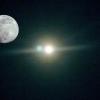
Looking for Nei Jing Tu: Qing Period Illustration of Inner Circulation
By
Spectrum, in Miscellaneous Daoist Texts & Daoist Biographies

By
Spectrum, in Miscellaneous Daoist Texts & Daoist Biographies